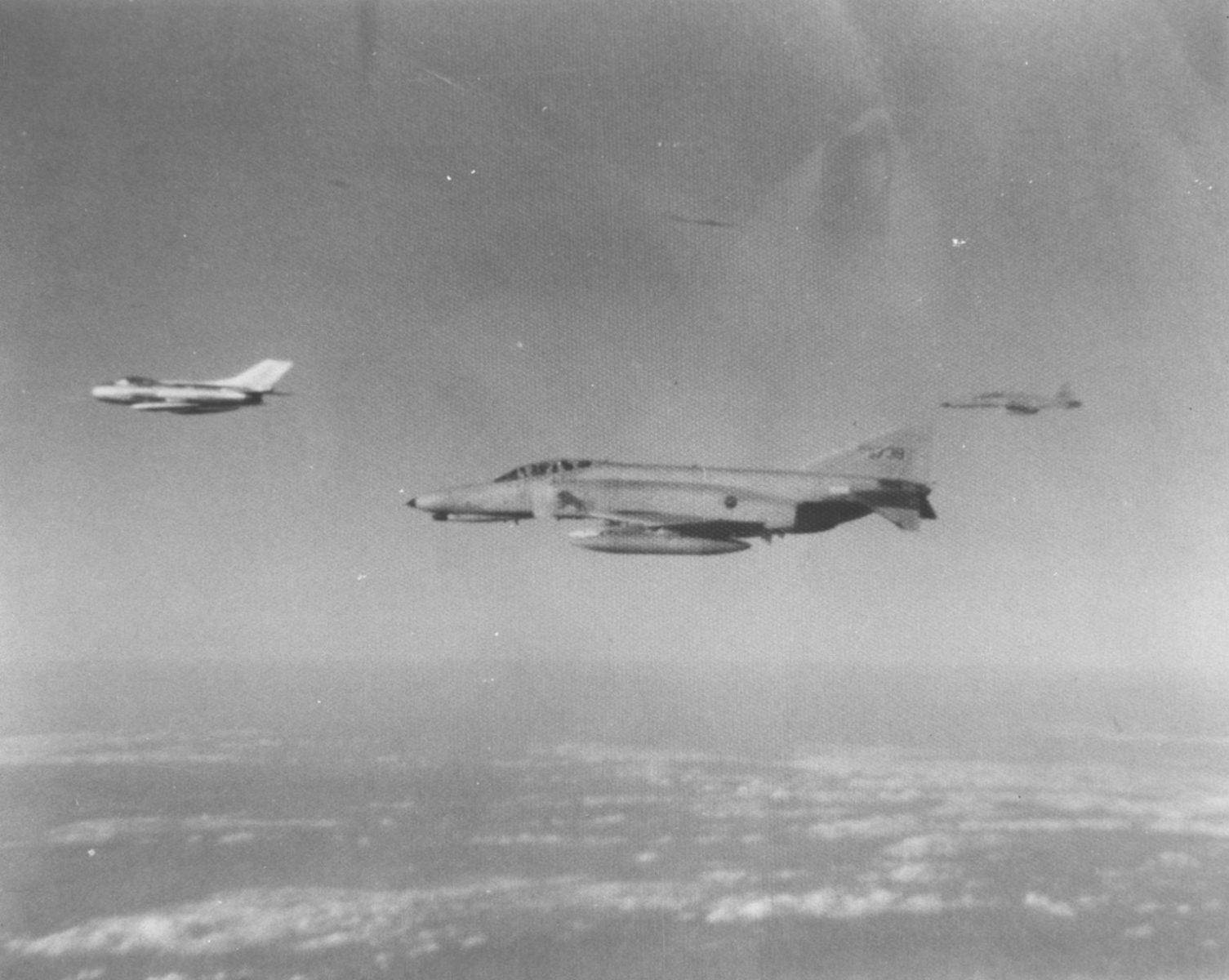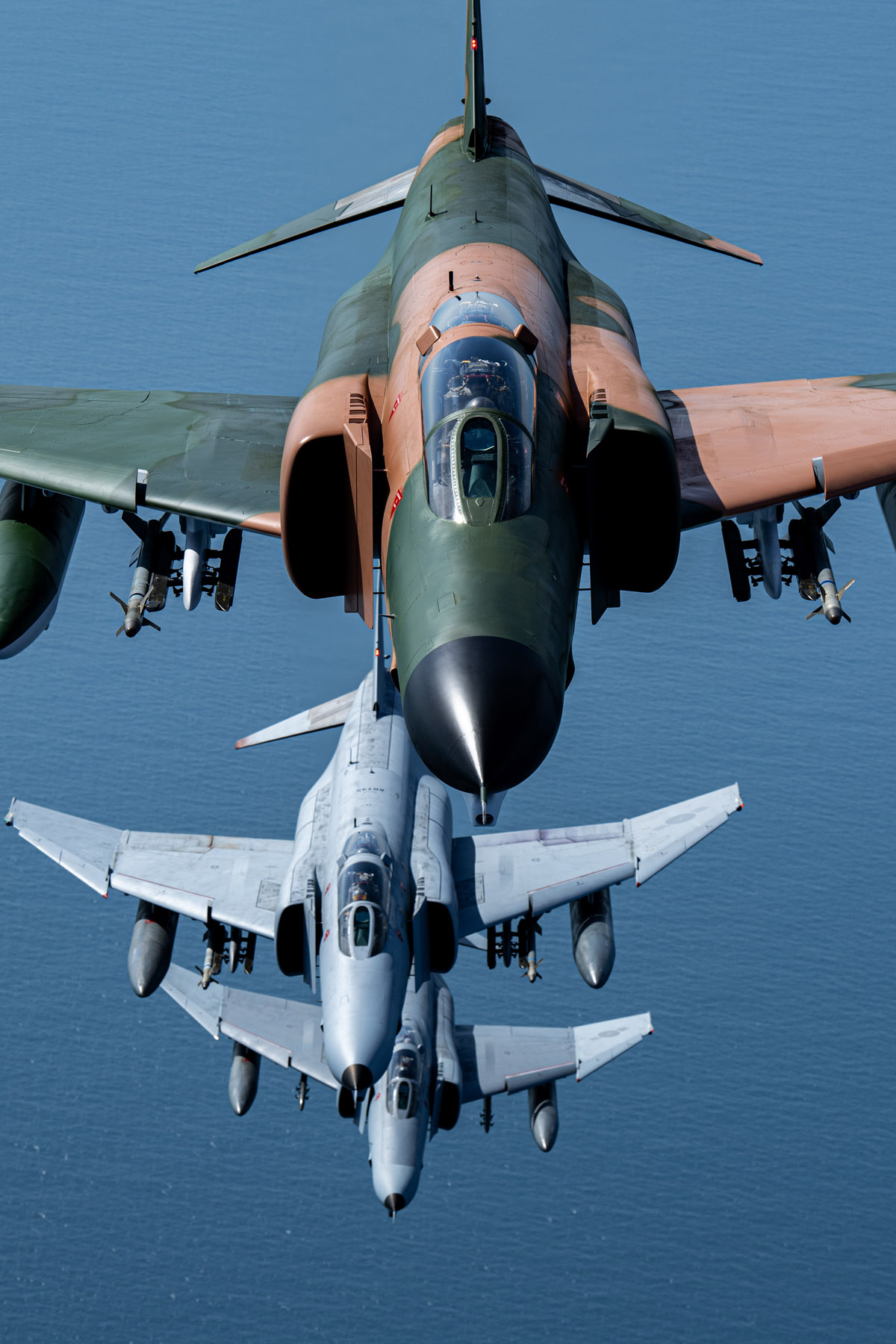SPECIAL FEATURE | PART 1 OF 2

7 June 2024. The F-4, more affectionally known as the ‘Phantom’, gracefully bowed out of service with the Republic of Korea Air Force (ROKAF) after an impressive 55 years. It is an apt moment to look back at the evolution of the F-4 over the years, and delve deeper into the history of the Korean Phantoms, the “masterpiece of the fighter” which has a special place in many people’s hearts.
Background of the Phantom
The F-4 Phantom II is an American, two-seat, twin engine, supersonic jet interceptor and all-weather fighter-bomber developed by McDonnell Aircraft in 1958, with production continuing under McDonnell Douglas after merger in 1967.
The Cold War brought in the age of modern warfare where doctrine advocated for advanced radar and missile technology in preparation for engagements beyond visual range. The F-4 entered service in 1960 with the U.S Navy, its original design meant to meet its Fleet Air Defence mission. It was then quickly adopted by U.S. Marine Corps in 1962 and the U.S. Air Force in 1963.
McDonnell Douglas produced 5,057 F-4s till 1981. Apart from being in service with all three branches of the U.S military, it also saw export to 11 nations. An additional 127 were F-4EJs, license-built by Mitsubishi, bringing the total to 5,195 airframes.
The F-4A, B, J, N and S were variants for the U.S Navy and U.S. Marine Corps. The F-4C, D and E were variants for the U.S. Air Force, with D and E variants being widely exported. Other variants include F-4G for the Wild Weasel role, RF-4B/C/E for reconnaissance, QF-4x/QRF-4x retired airframes modified into target drones, and F-4K/M/F/EJ export variants.
The F-4E, the latest model of the F-4, presented much-needed improvements over the F-4D. J79-GE-17 engines were used, each providing 17,900 lbf of afterburner thrust (900 lbf more than the J79-GE-15 on the F-4D). Most importantly, an internally mounted 20mm M61A1 Vulcan cannon with 640 rounds was added, improving dogfighting favourability at subsonic speeds.
Over time, the F-4 has shown its adaptability, evolving to take on a variety of operations such as Close Air Support, bombing missions and interceptions of enemy aircraft. The F-4E has a maximum speed of Mach 2.4 and payload capacity of 7.3 tons, giving it flexibility to deploy a variety of air-to-air and air-to-ground armaments such as the AGM-142, AGM-65, MK-82, AIM-7M, etc.
With the arrival of more modern jets, the F-15 and F-16 for the Air Force, and F-14 and F/A-18 for the Navy and Marines, the F-4 was gradually phased out of American service. By 1992, the last naval aviation Phantom (F-4S) was retired by the U.S. Marines. U.S. Air Force retired the F-4G in 1996 and the QF-4G in December 2016, marking 53 years of service.
Elsewhere, with the retirement of the Korean Phantoms, the pool of active operators have now shrunk to just three: Turkey, Greece and Iran. The sunset of the Phantom might be imminent, but the Cold War-era icon, the MiG killer, has left a lasting legacy, proving its worth as the first truly multi-role fighter.
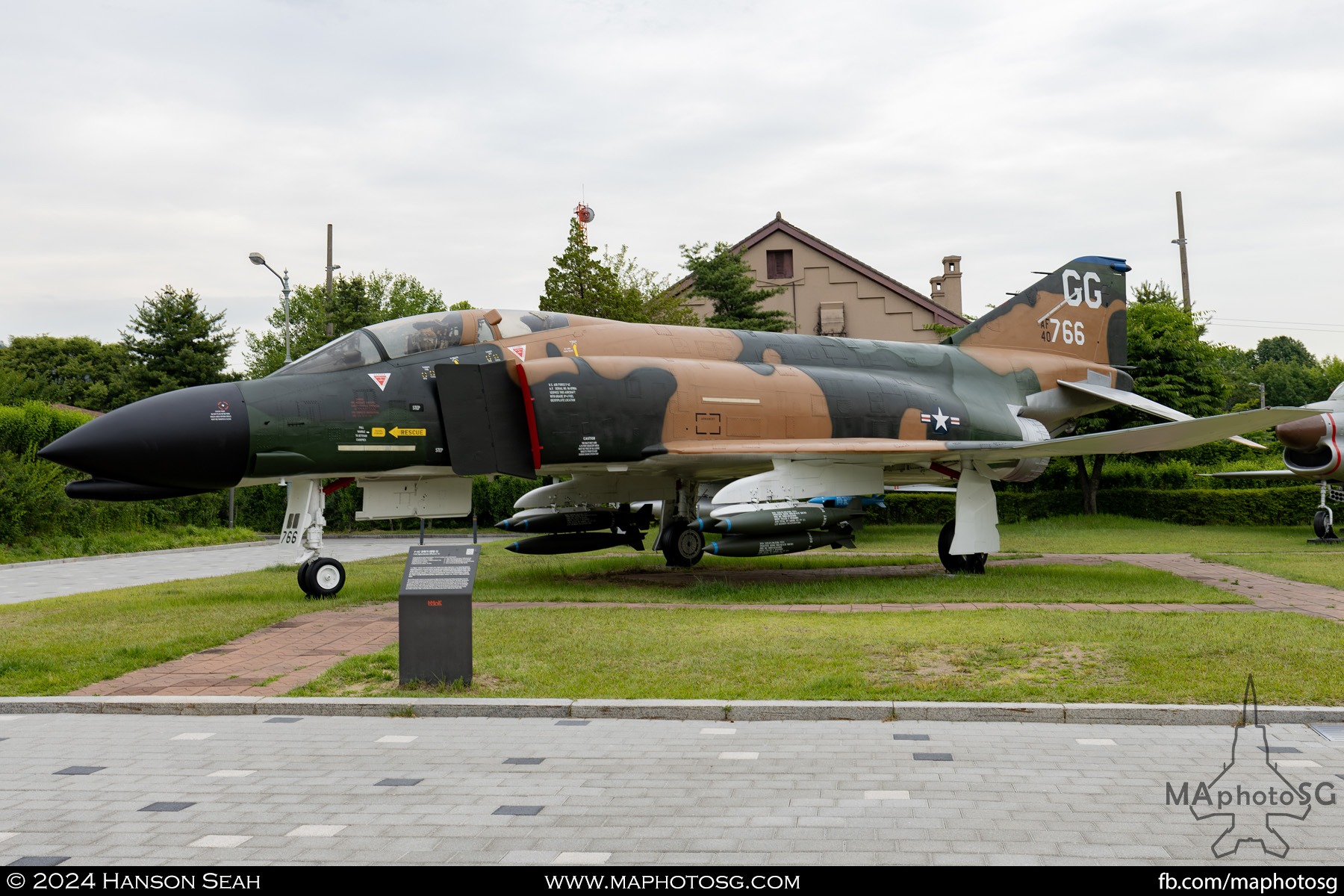
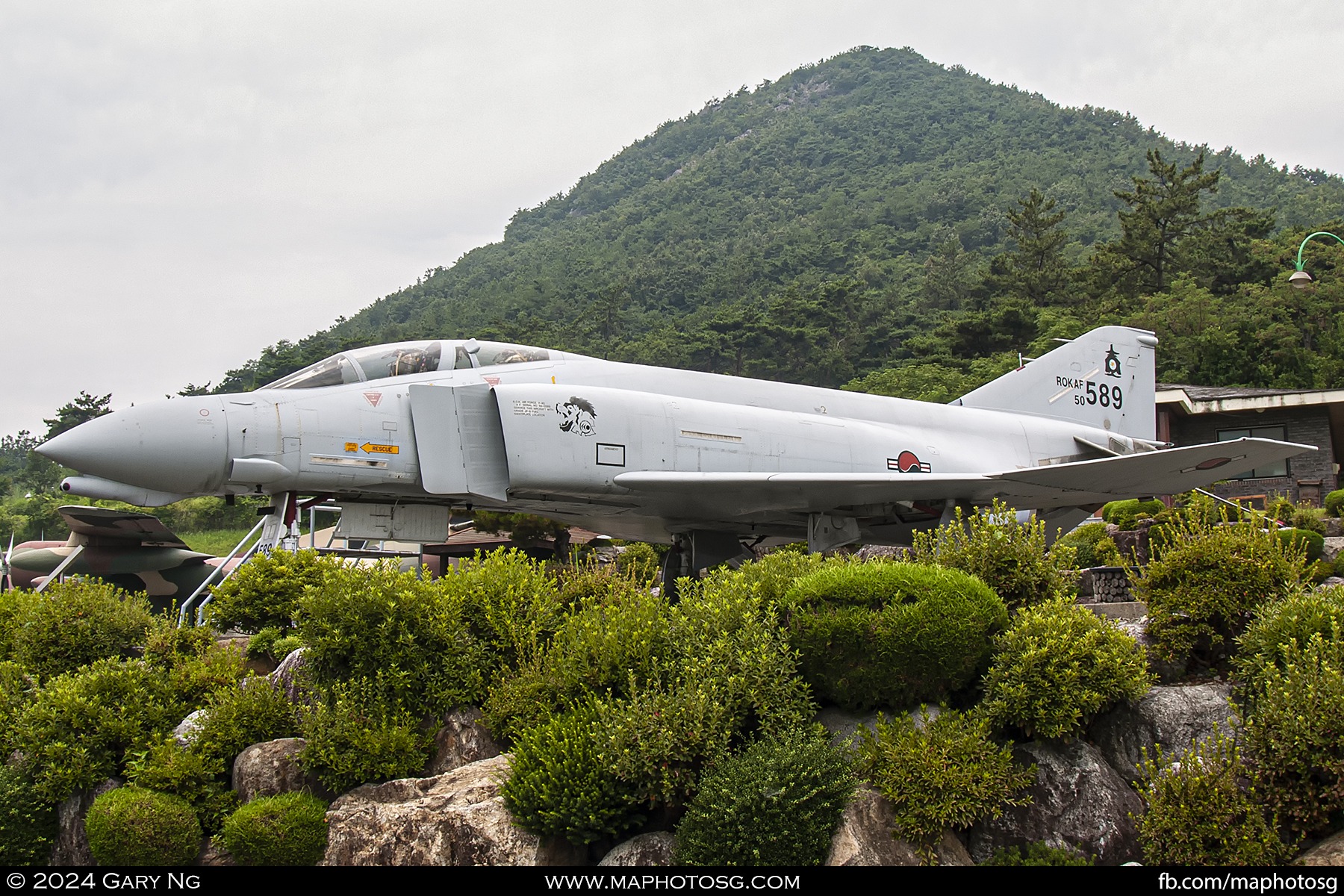
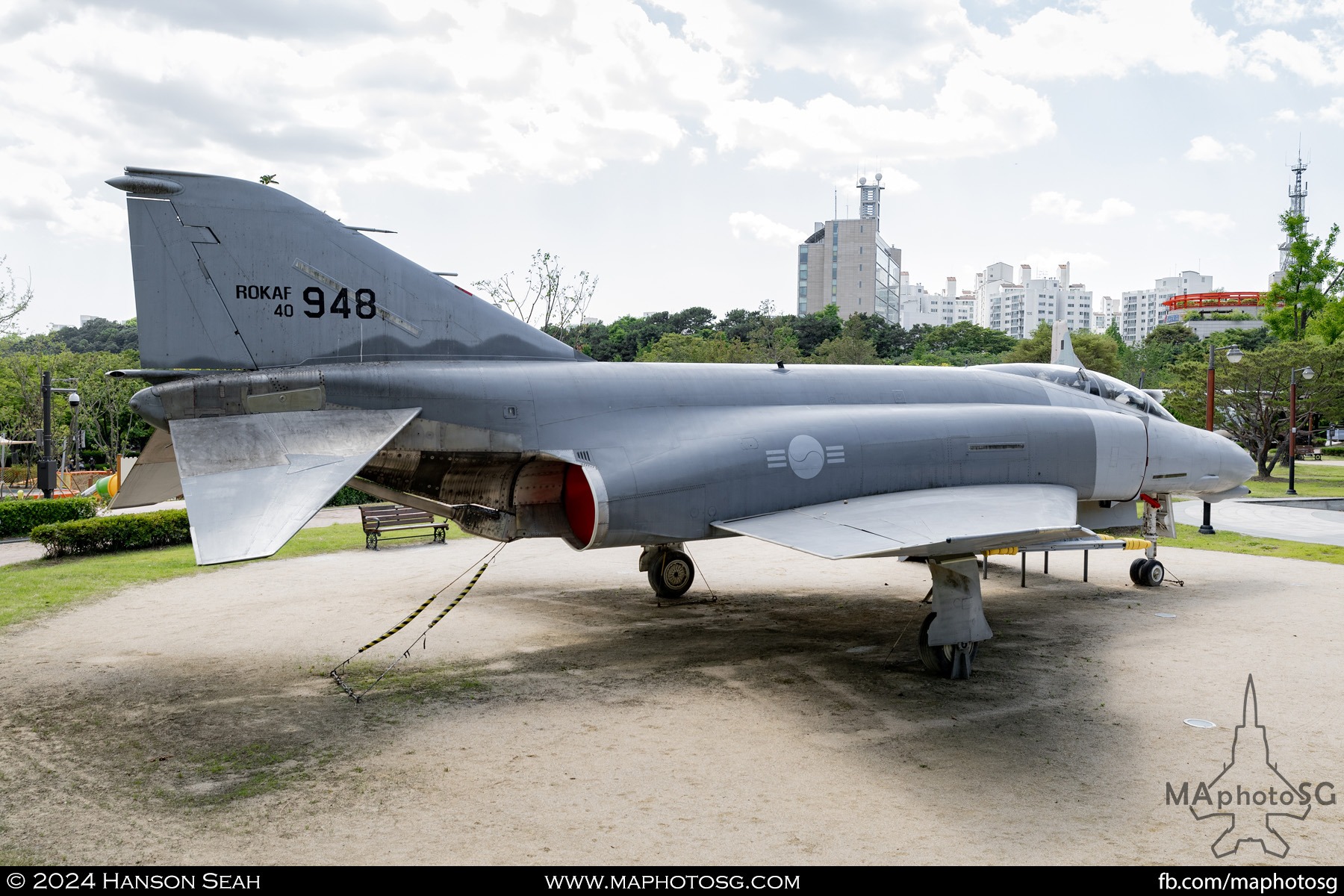
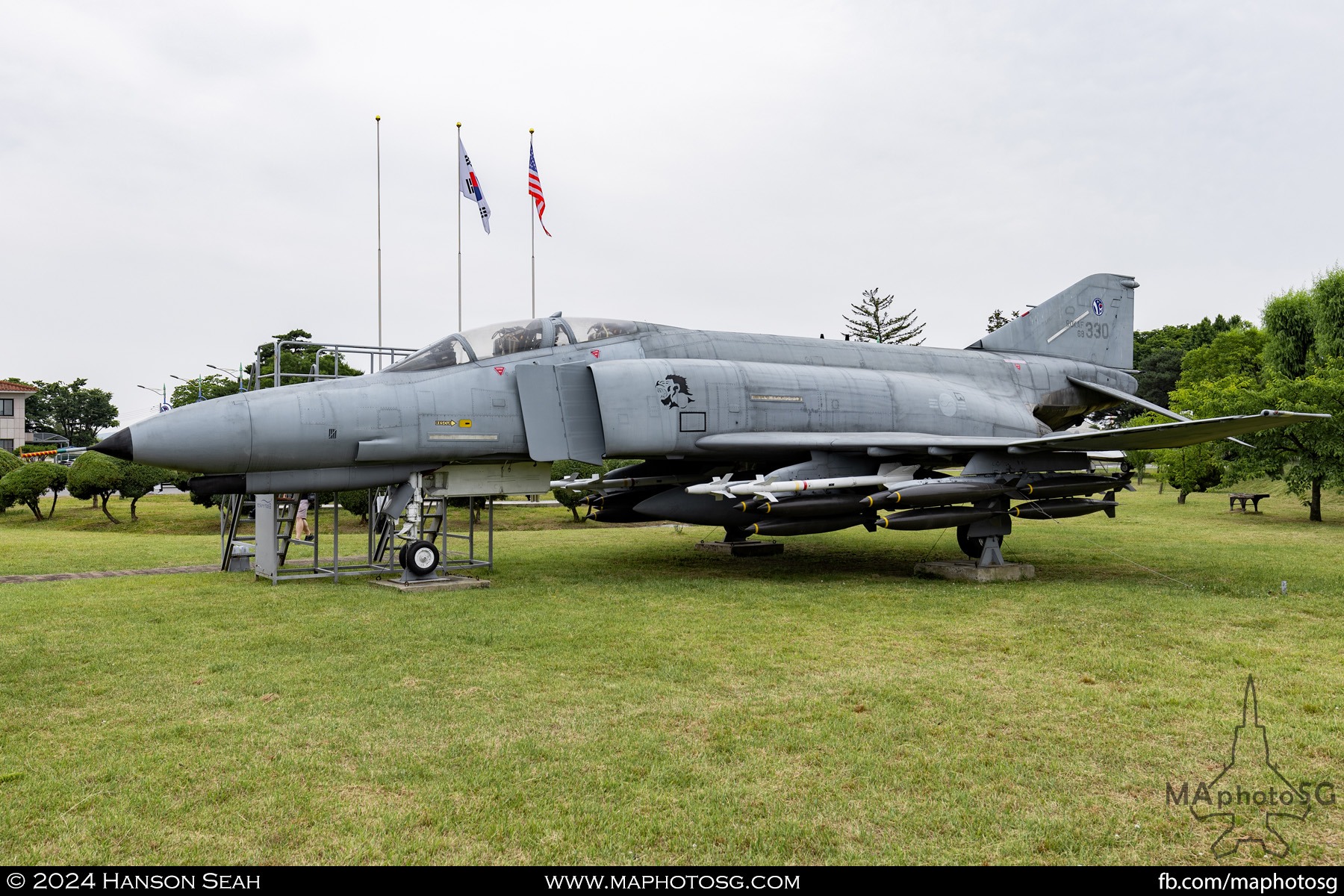
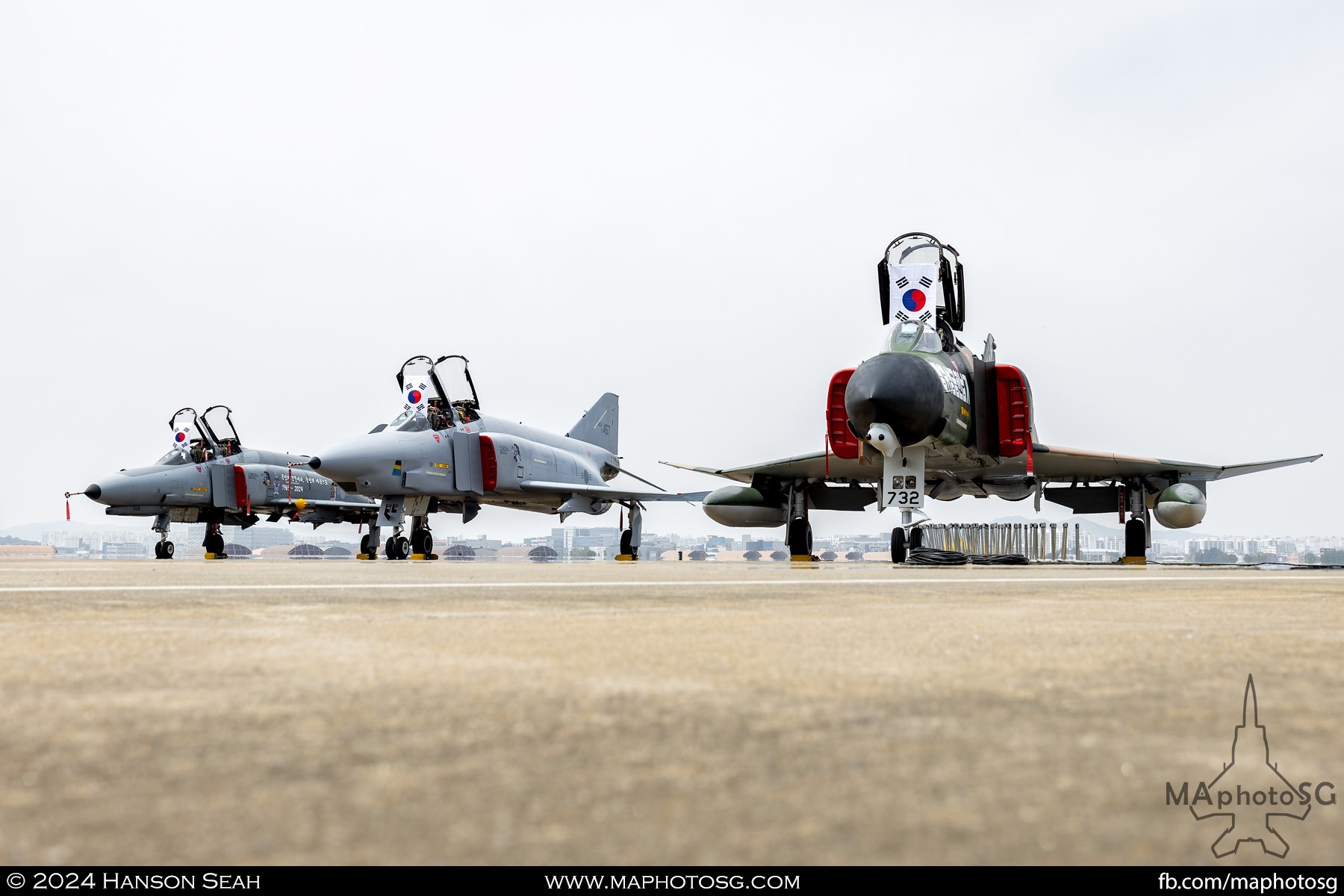
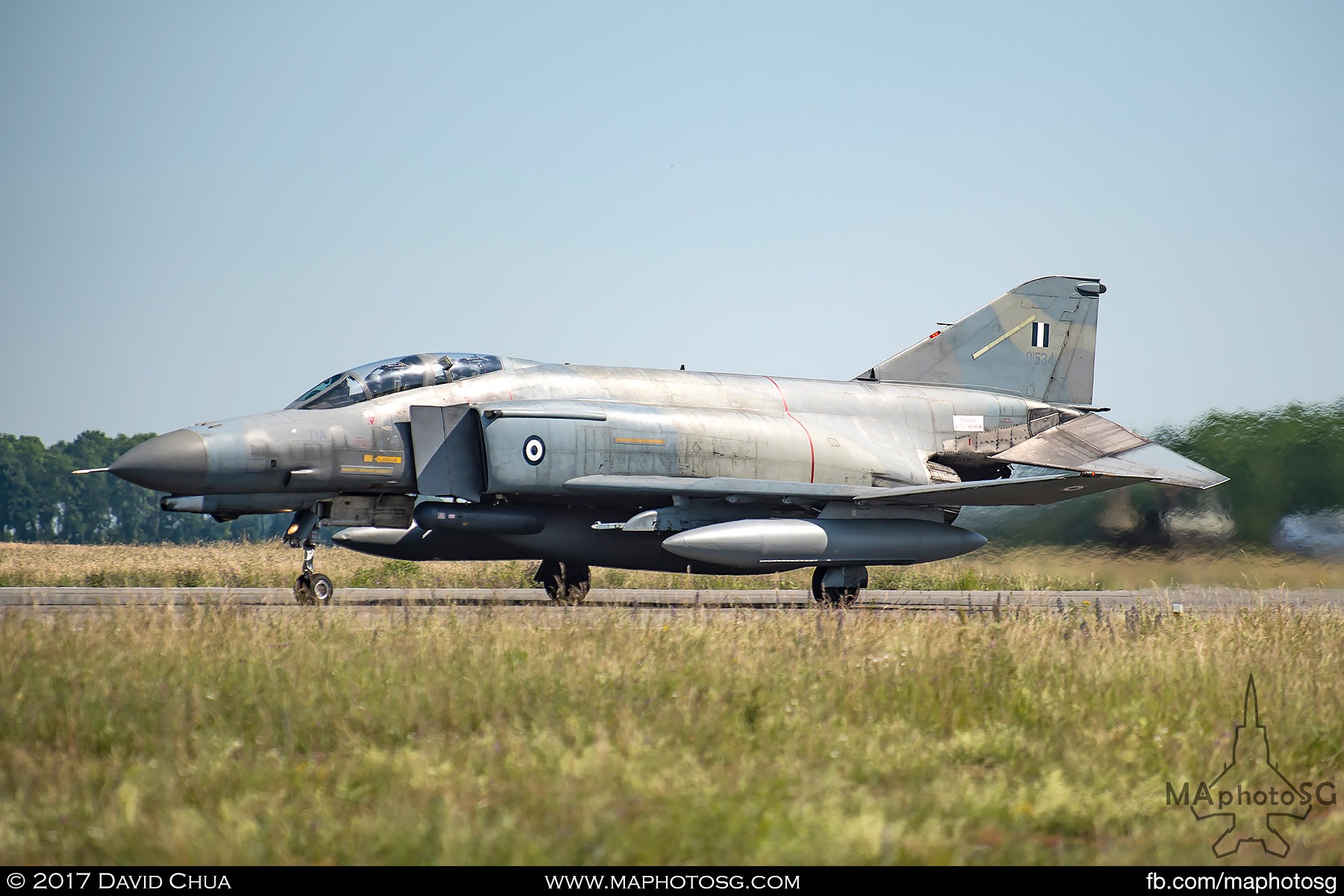
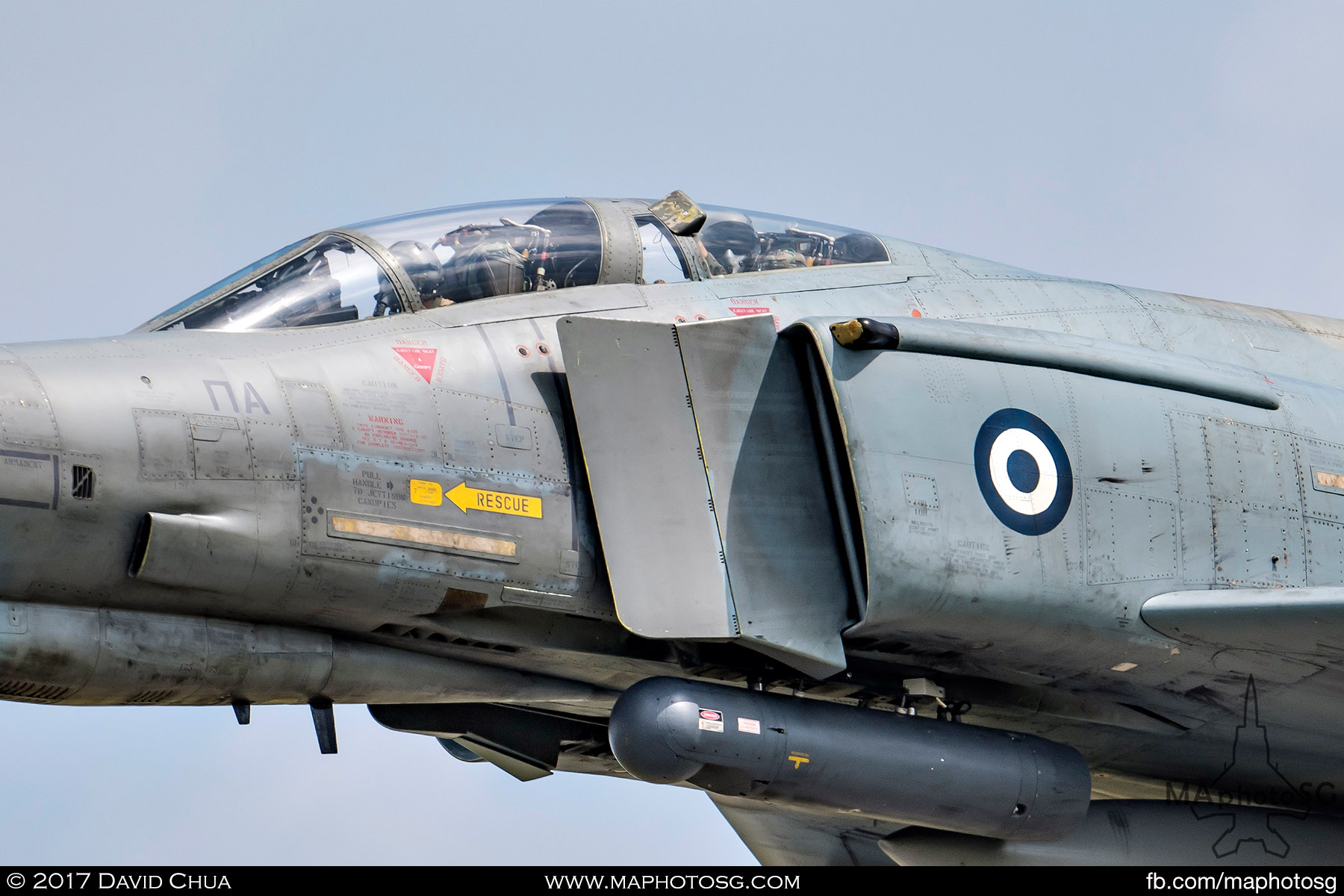
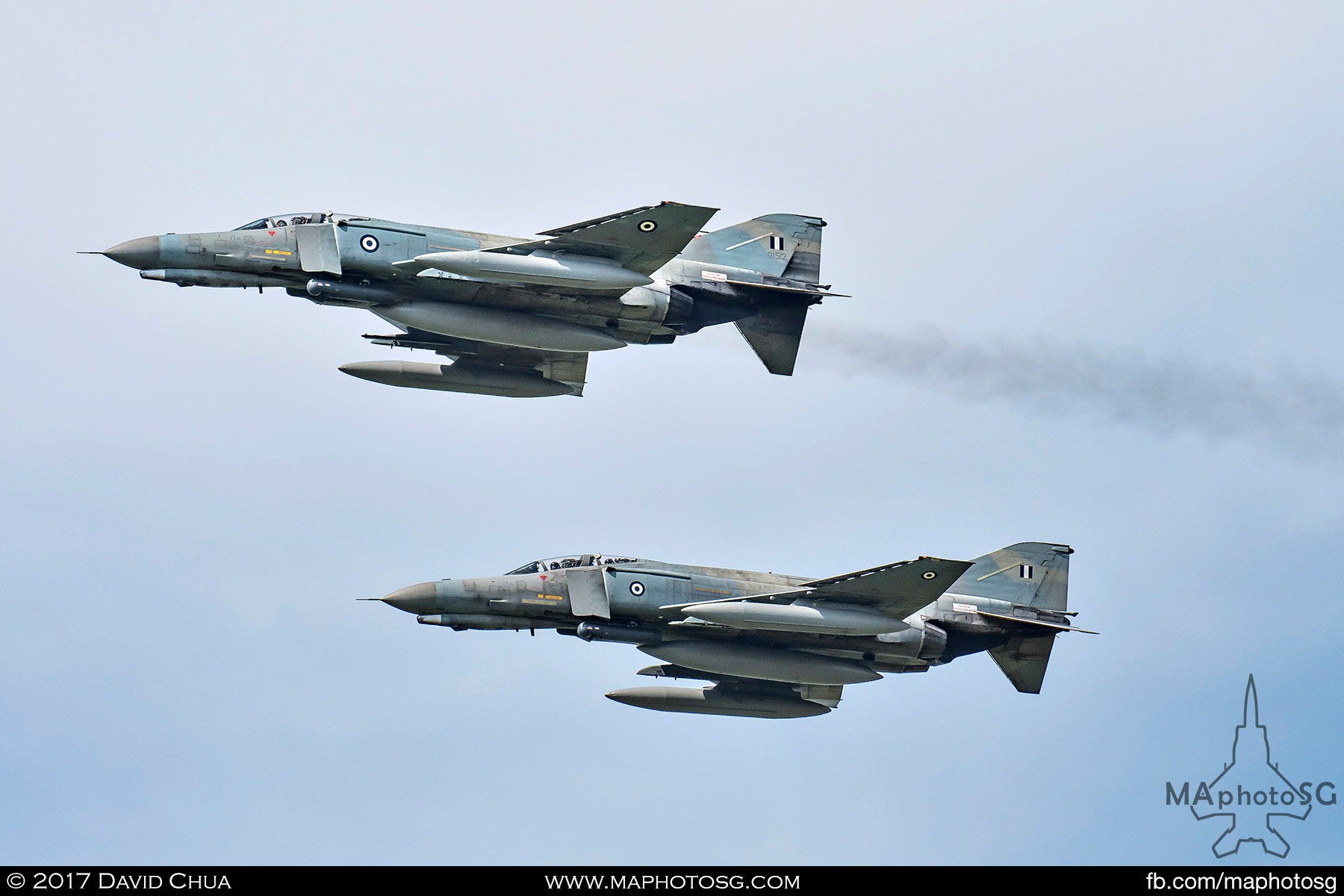
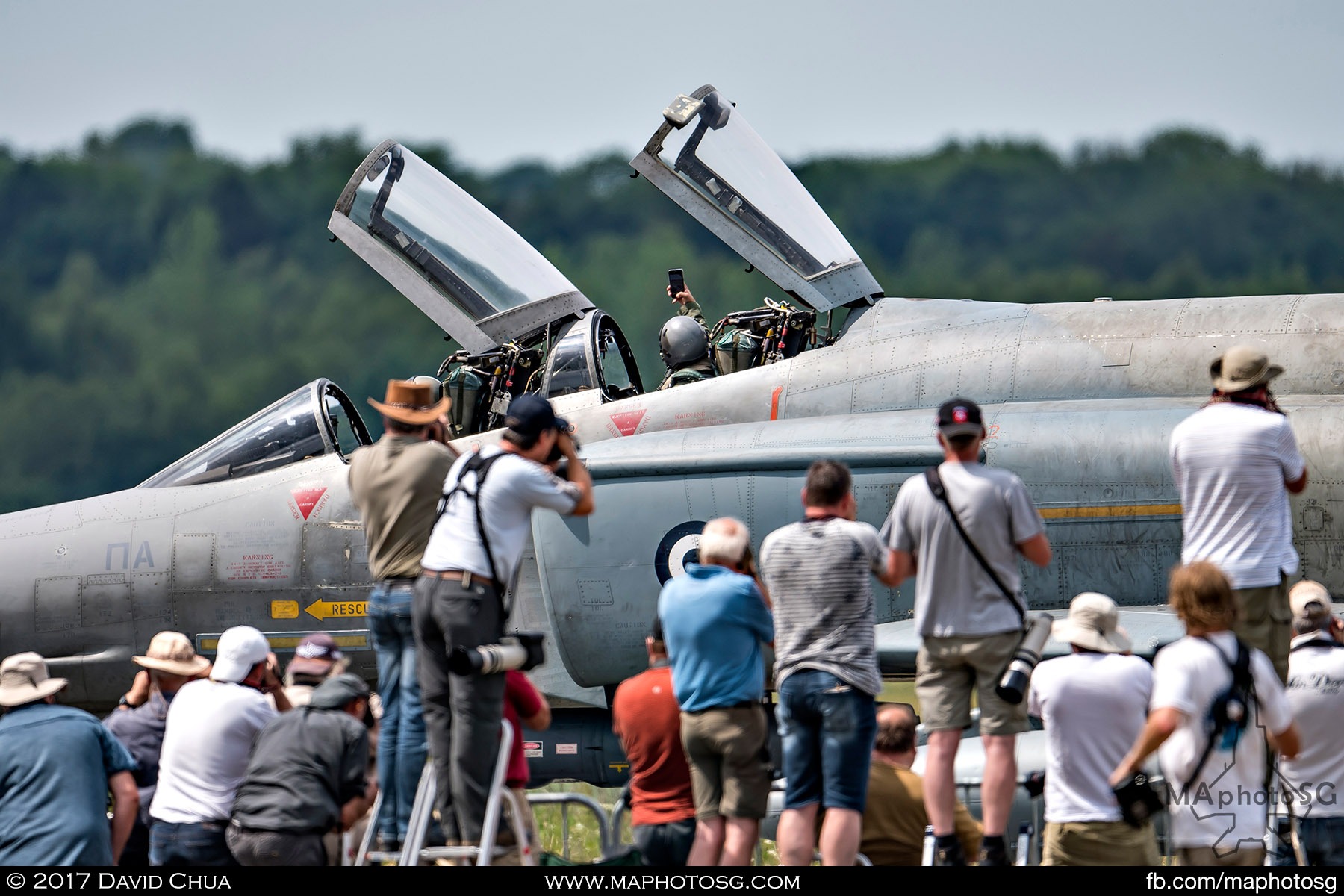
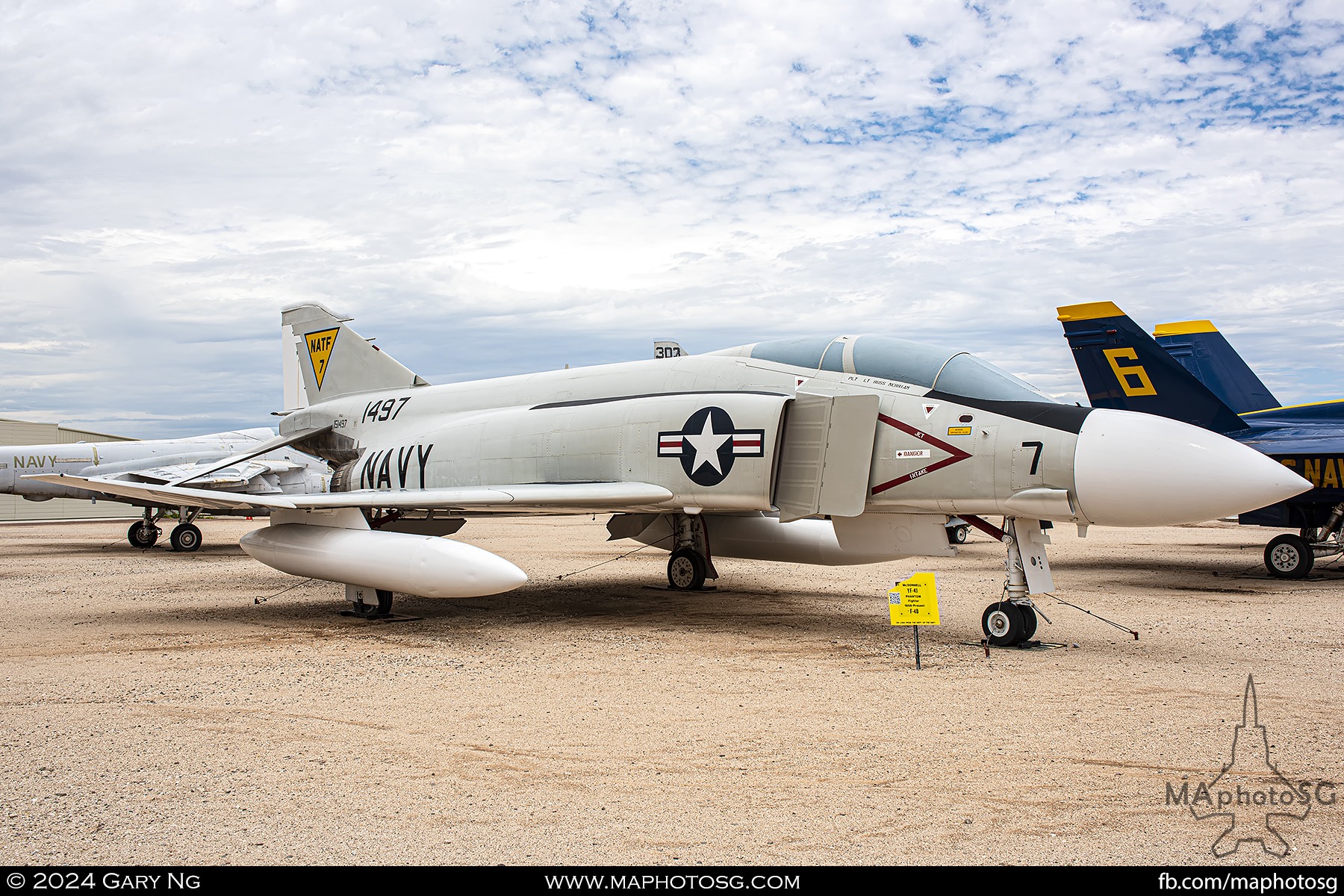
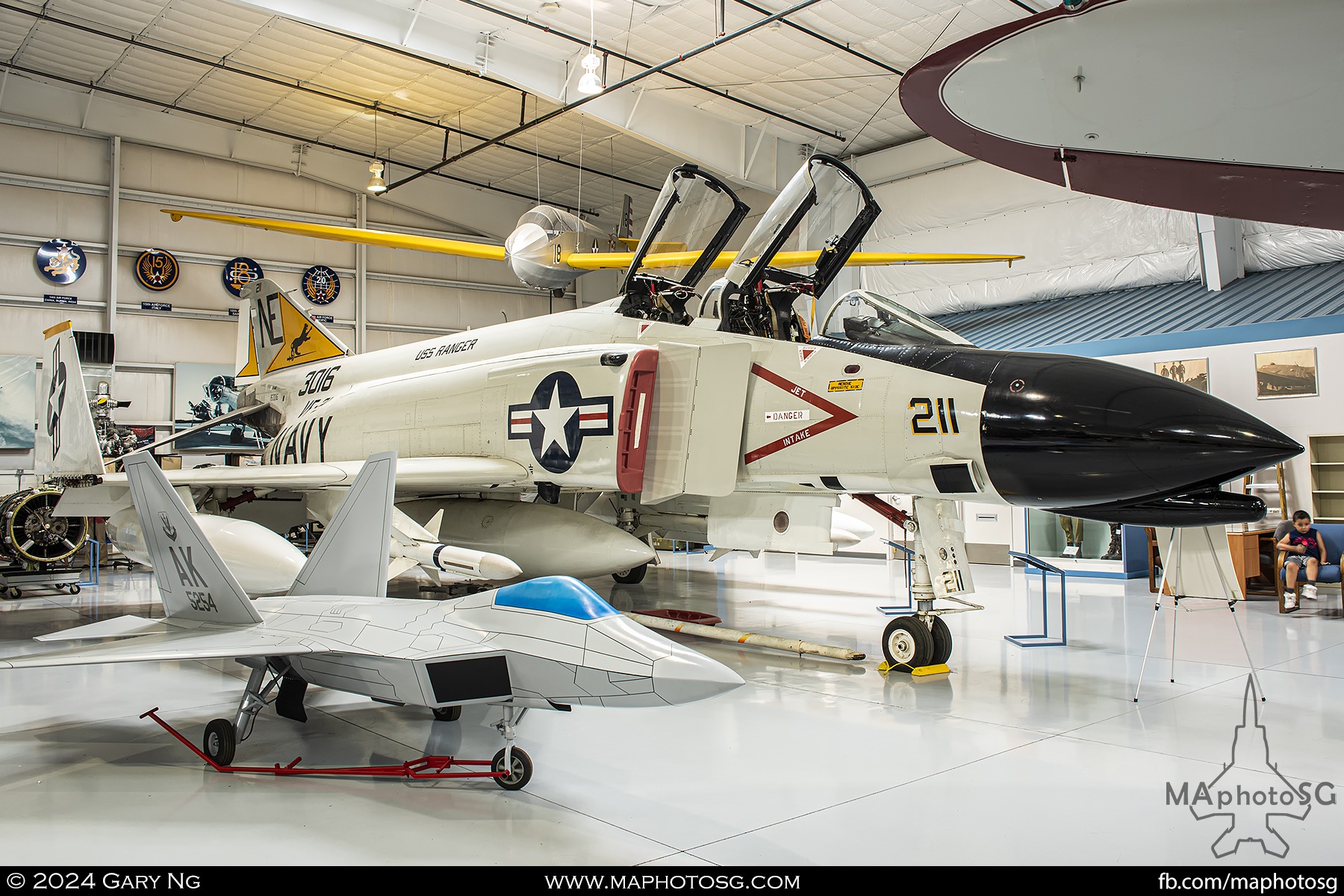
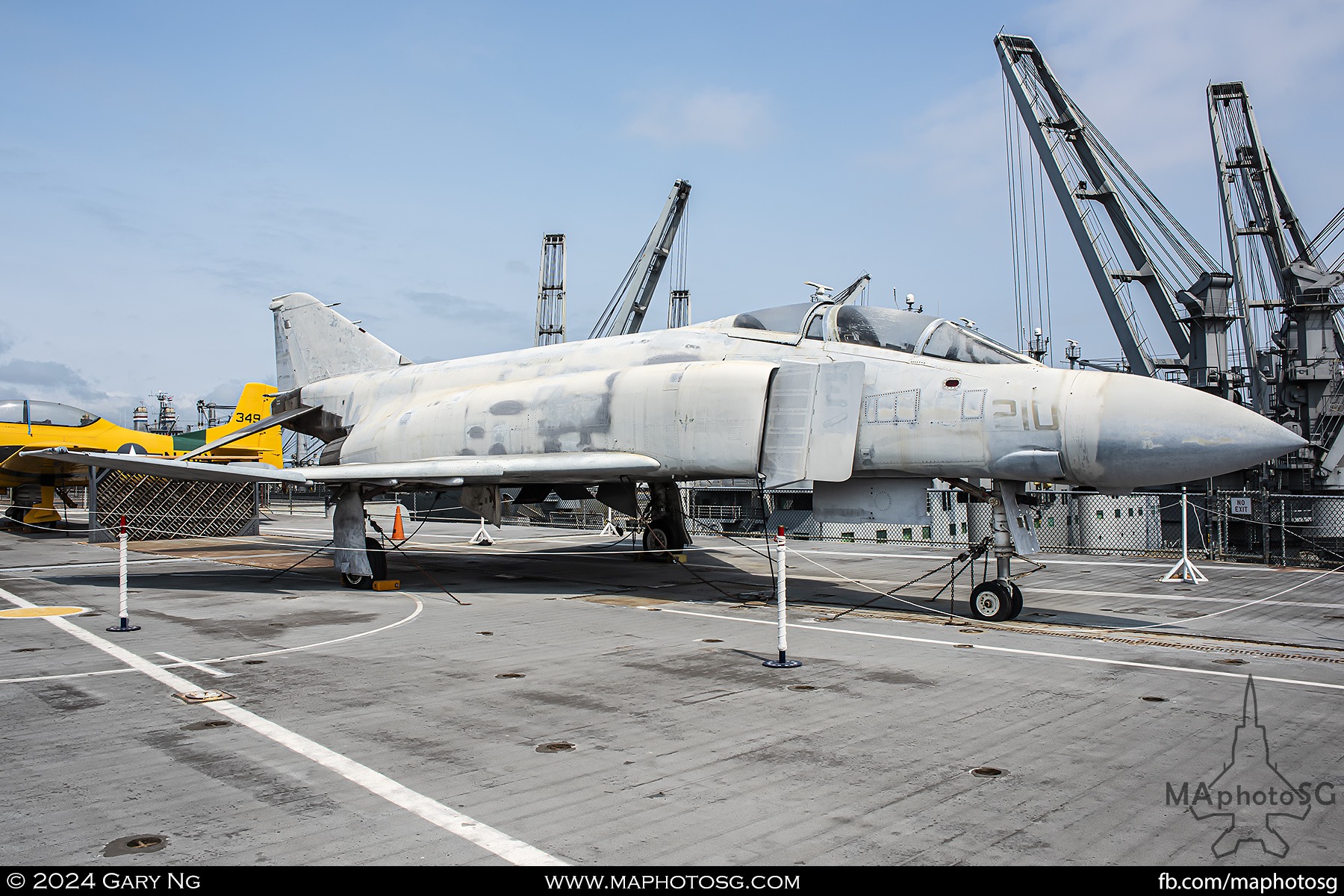
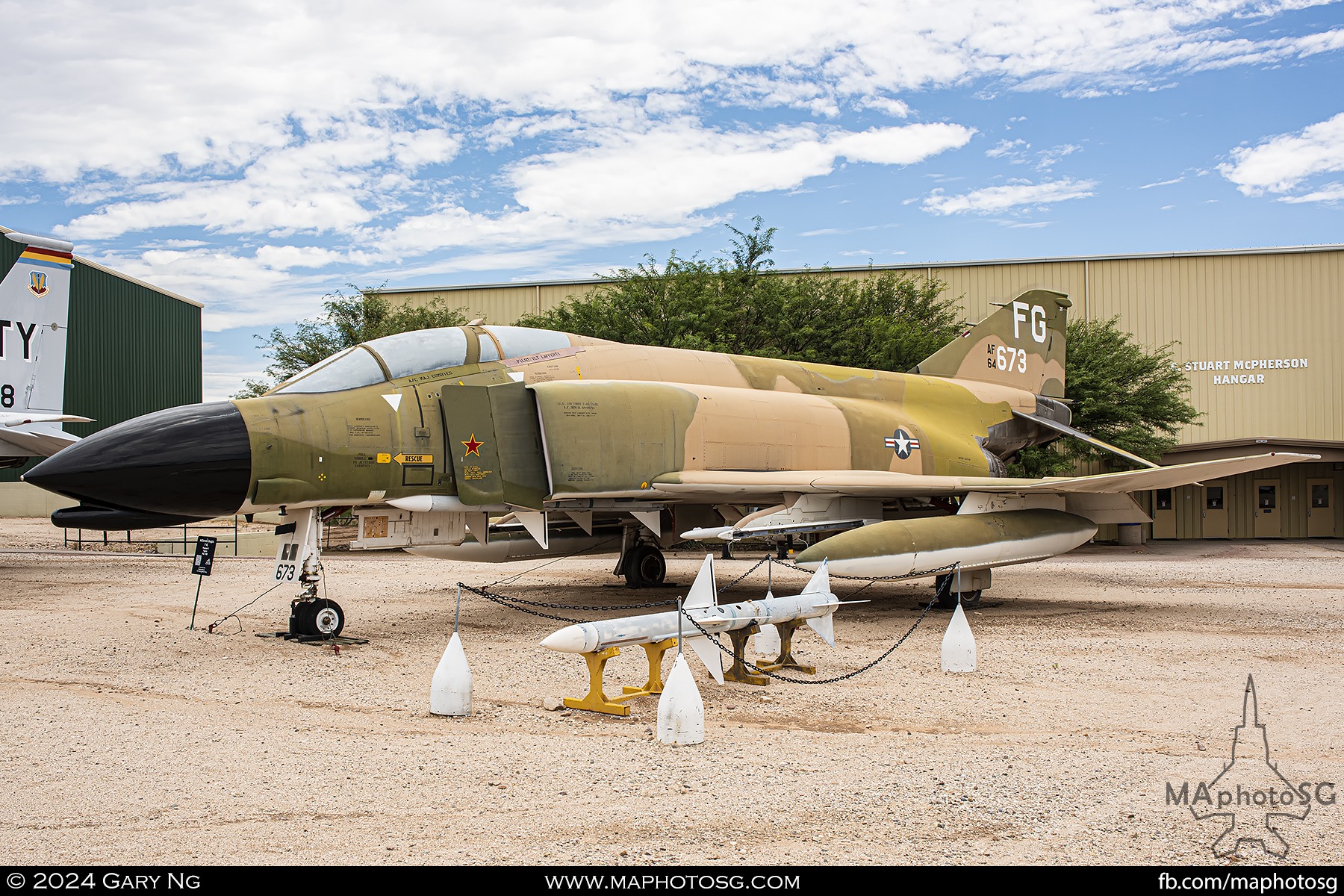
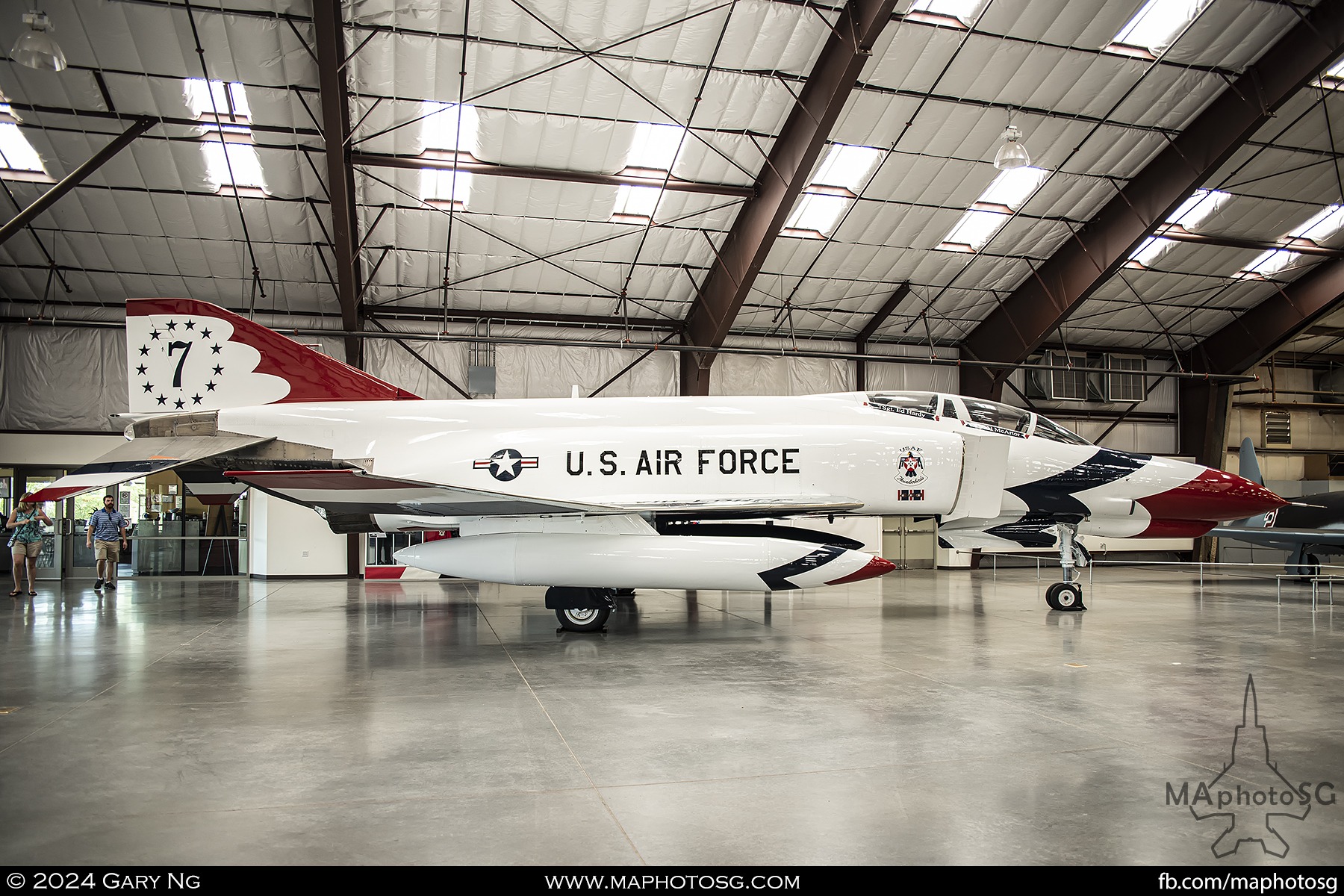
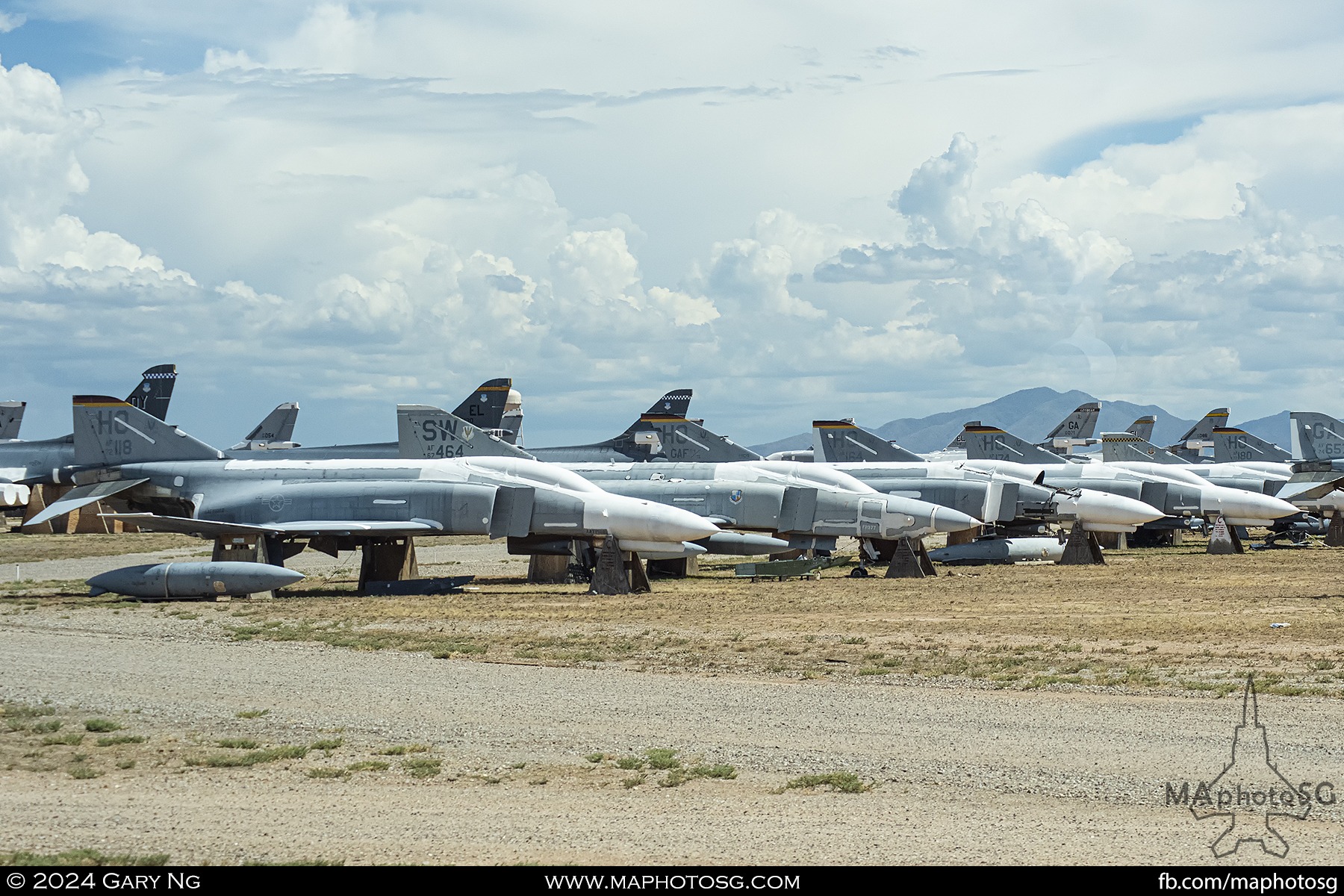
ROKAF F-4 Story
The Republic of Korea Air Force (ROKAF) operated a total of 187 F-4s from 1969 to 2024. For its lasting service, the F-4 is nicknamed the ‘Dokkaebi’, after an immortal goblin from Korean mythology and folklore. Another moniker given was the ‘Spook’, which ROKAF have created three different characters to commemorate the F-4E’s retirement. ‘Spook’, a typical ghost and a closer relation to the official ‘Phantom’ nickname, bears similarity to the F-4’s profile when looked from the rear – the drooped horizontal stabiliser represents the hat, the twin engine exhausts represent the eyes.

In 1968, under the ‘Peace Spectator’ program, a batch of 18 ex-U.S Air Force (USAF) F-4Ds were allocated to ROKAF. This was paid for with $64 million under the Military Assistance Program by the U.S. government. The acquisition of the F-4s was seen as a game-changer for the ROKAF at the time, to counter North Korea’s Air Force which was roughly twice in size and possessed capable fighters such as the MiG-21. Additionally, it also made South Korea the fourth country to operate the Phantom (incl. U.S., U.K, Iran, South Korea).
The first 6 F-4Ds touched down in Daegu Air Base on 29 August 1969, flying 12,000km from McClellan Air Force Base, California, and undergoing mid-air refuelling via Hawaii, Guam and Okinawa. A Handover Ceremony was conducted, attended by then-Minister of National Defence Im Chung-sik.
The first batch of F-4Ds was used to equip the 151st Fighter Squadron of the 11th Fighter Wing, officially inaugurated on 23 September 1969 by then-President Park Chung-hee.
The F-4Ds immediately got up to speed, taking part in critical missions. On 1 June 1971, when an armed North Korean spy ship was discovered off the coast of Soeguksan (now known as Gageodo) Island, ROKAF and ROK Navy conducted a joint counter-espionage operation. The F-4D pursued the fleeing vessel in darkness and destroyed it despite facing intense anti-aircraft fire.
In 1972, under the ‘Enhance Plus’ program, the South Korean government agreed to transfer 36 of its F-5A/Bs to South Vietnam during the Vietnam War, in exchange for the loan of 18 F-4Ds, drawn from USAF’s 3rd Tactical Fighter Wing. The U.S would eventually make this transfer permanent, and would continue to supply more F-4Ds. The last batch of 24 was delivered from December 1987 to April 1988, under MIMEX (Military Material Excessive).
In 1975, South Korea was in an elevated security situation, a perceived threat of communism with then-North Korea’s leader Kim Il-Sung’s visit to China and the fall of Saigon ending the Vietnam War. The people of South Korea rushed to donate funds for the defence of the nation, eventually funding the purchase of 5 F-4Ds for 7 billion won. These fighters would be named ‘Donation to the National Defence Fund’, visible on the markings near the nose. An appreciation ceremony was held at Suwon Air Base on 12 December 1975, where these aircraft was named ‘Pilseung Squadron (Victory Squadron)’ by then-President Park Chung-hee. The ‘Pilseung Squadron’ then took to the skies and flew over 12 major cities across South Korea to express gratitude to the citizens who contributed to the fund.
In total, 92 F-4Ds were transferred to ROKAF from 1969 to 1988, with 11th Fighter Wing, Daegu AB being the main operating base. This would make ROKAF the largest export customer for the F-4D, but in the process they were also seeking for the enhanced E variants.
Under the ‘Peace Pheasant II’ program, 37 newly built F-4Es were introduced to strengthen ROKAF’s inventory beginning 1977. Interestingly, the last of these planes was also the last Phantom (5068th, 78-0744) built in the U.S. by Mcdonnell Douglas.
Despite the F-4Es being initially inducted under 11th Fighter Wing, Daegu AB, their home base was soon shifted to 17th Fighter Wing, Cheongju AB. 152nd and 153rd Fighter Squadron were created to take in these F-4Es.
Subsequently, ROKAF also received ex-USAF F-4Es under MIMEX, a total of 30 units from December 1989 to 1991.
The F-4E was put in the spotlight on 25 February 1983, when Korean People’s Army Air Force (KPAF) Captain Lee Woong-pyeong famously attempted a defection in his MiG-19. A ROKAF F-4E was scrambled to intercept the North Korean aircraft and guide it to a safe landing at Suwon Airbase.
Throughout the 80s, the F-4Ds/Es were on station to intercept military assets that ranged from Soviet Tu-16 (1983), Soviet Tu-95 (1984), Soviet nuclear submarines (1984), to even handling Chinese MiG defections (1983, 1986).
On 17 February 1998, the F-4D was scrambled to intercept a Russian Air Force Il-20M COMINT/ELINT (Communications/Electronic Intelligence) aircraft that entered KADIZ (Korean Air Defence Identification Zone) over the East Sea.
Apart from frontline operations, the Phantom also took part in local and multi-national exercises, such as Soaring Eagle and Red Flag, the latter as early as 1979.
Meanwhile, RF-4C operations started in 1989 when they were transferred from USAF’s locally-based 460th Tactical Reconnaissance Squadron to ROKAF’s 131st Tactical Reconnaissance Squadron of the 39th Tactical Reconnaissance Group. ROKAF would receive 18 RF-4Cs with the complete disbandment of 460th TRS in 1990 and further transfers are said to have expanded the fleet up to 27, operating from Suwon AB. The RF-4C transfers also came with a number of AN/ALQ-131 jamming pods. These Phantoms, although unarmed, played an important role in monitoring the border with North Korea through low and high altitude photographic reconnaissance missions.
Whilst the original design life of the F-4 is around 4,000 hours, actual service life could be extended to 8,000 hours, depending on operating environments and life extension efforts. ROKAF, blessed with the expertise from their maintainers and safety awareness of their pilots, have managed to operate the F-4E to 9,600 hours and the RF-4C to 10,200 hours.
However, with dwindling number of global operators, equipment obsolesce, lack of spare parts, ROKAF has found increasing difficulty in maintaining these Phantoms, leading to the F-4D retiring in 2010, RF-4C in 2014, and finally the F-4E in 2024.
The retirement of the Phantoms also puts their replacements into spotlight. Various ex-F-4 squadrons have now converted to fourth and fifth generation aircraft such as the KF-16, RF-16, KF-15, and F-35A. In the future, the KF-21 is also expected to supplement the drawdown of both F-4s and F-5s. Recently, the first production contract for 20 KF-21 has been announced; three new variants (EA – Electronic Attack, EX – 5th gen. with internal weapons bay and NACS integration, SA – for export) are also in development stages.


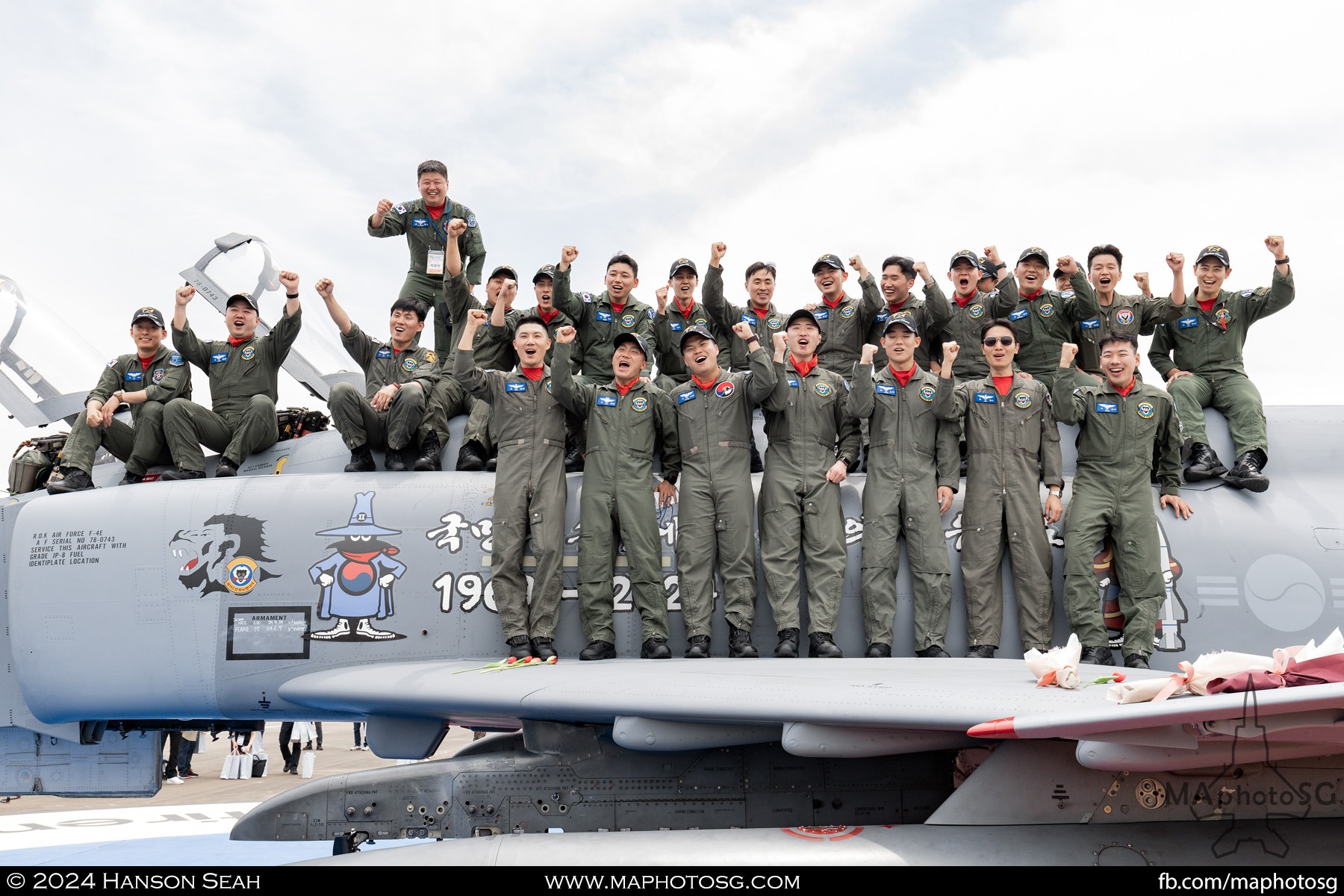
Ultimately, over the course of ROKAF’s history, the Phantoms would see service across 9 squadrons, 4 for the F-4D, 4 for the F-4E, and 1 for the RF-4C as follows:
110th Fighter Squadron. Established in 1966 under 10th Fighter Wing, Suwon AB, operated F-5. Relocated to 11th Fighter Wing, Daegu AB, in 1972 and converted to the F-4D. Operated the F-4D from 1972 to 2007, before disbanding. Reactivated in 2010 to convert to F-15K.
131st Tactical Reconnaissance Squadron. Established in 1989 as part of the 39th Tactical Reconnaissance Group. It operated the RF-4C out of Suwon AB from 1989 to 2014, before disbanding and passing the mission to 159th Tactical Reconnaissance Squadron.
151st Fighter Squadron. Inaugurated in 23 September 1969 by then-President Park Chung-hee, under 11th Fighter Wing, Daegu AB. The first batch of F-4Ds were used to equip the squadron, and became the first Phantom squadron in East Asia. Operated the F-4D from 1969 to 2010 before disbanding. Reactivated and relocated to 17th Fighter Wing, Cheongju AB to convert to F-35A, and in 2019 became the first squadron to operate the F-35.
152nd Fighter Squadron. Established in 1977 under 11th Fighter Wing, Daegu AB. Relocated to 17th Fighter Wing, Cheongju AB in 1979. Was first of two squadrons initially established to operate the F-4E, and saw service from 1977 to 2017. Subsequently converted to F-35A.
153rd Fighter Squadron. Established in 1979 under 11th Fighter Wing, Daegu AB. Relocated shortly after, in 1980, to 17th Fighter Wing, Cheongju AB. Was the second of two squadrons initially established to operate the F-4E. Further relocation to 10th Fighter Wing, Suwon AB, in 2017, when it absorbed and consolidated remaining F-4Es in ROKAF inventory. Would operate the F-4E from 1979 to 2024, with the honour of being the last squadron to phase out the Phantom.
155th Fighter Squadron. Established in 1977 under 17th Fighter Wing, Cheongju AB. It operated the F-4E from 1977 to 1993. It relocated to 19th Fighter Wing, Jungwon AB, in 1991, subsequently converting to the KF-16.
156th Fighter Squadron. Established in 1988 under 17th Fighter Wing, Cheongju AB. Relocated to 10th Fighter Wing, Suwon AB, in 1991. Operated the F-4E (MIMEX) from 1988 to 2012, before disbanding.
157th Fighter Squadron. Established in 1990 under 17th Fighter Wing, Cheongju AB. Operated the F-4D (from ‘Enhance Plus’) till relocation to 20th Fighter Wing, Seosan AB, in 1999, where model conversion to KF-16 took place.
159th Fighter Squadron. Established in 1988 under 11th Fighter Wing, Daegu AB. Operated the F-4D till relocation to 19th Fighter Wing, Jungwon AB, in 1997, where model conversion to KF-16 took place. Reassigned to 39th Tactical Reconnaissance Group and renamed to 159th Tactical Reconnaissance Squadron in 2014, operating RF-16 and taking over the RF-4C roles.
Dokkaebi’s Final Hurrah
As the final date of the Phantom drew closer, ROKAF initiated a series of events that served to honour the Phantom’s legacy and build up to a spectacular farewell fitting for the venerable ‘Dokkaebi‘.
Phantom Farewell Elephant Walk
On 8 March 2024, for the first time, all active fighter types under ROKAF took part in an elephant walk at Suwon Air Base, in conjunction with Exercise Freedom Shield and to honour the F-4E’s retirement. Eight F-4Es took the lead, followed by F-15K, F-16, FA-50, F-5, F-35A, for a total of 33 jets. The F-4Es were also armed in different configurations, with AGM-142H, AGM-65D missiles and Mk-82 bombs.
As Maj. Kim Do-hyung from 153rd Fighter Squadron, 10th Fighter Wing, emphasises, “It will be engraved in memory being part of the Phantom’s last active days. We are doing our best to make every sortie meaningful till the end. Even though I might switch to a different aircraft, I will defend the Republic of Korea with the pride of being a Phantom pilot”.
‘Goodbye, Popeye’, Last Live-Firing Exercise for the F-4E Phantom
On 18 April 2024, the last live-firing training was completed for the F-4E Phantom. The AGM-142 Popeye, was fired from the F-4E for the last time.
The AGM-142 is a ‘signature’ weapon for the F-4E and is an air-to-ground missile capable of hitting a target 100km away with an error of less than 1m. Nicknamed the ‘Popeye’ missile due to its strength similar to the cartoon character, it is able to penetrate 1.6m of reinforced concrete. Man-in-the-loop control through a datalink pod greatly improves accuracy. This means that the controller, usually the pilot, can switch from Inertial Navigation System (INS) to TV or infrared seeker for terminal guidance, directly controlling the missile’s path till point-of-impact if required.
ROKAF introduced the AGM-142 in 2002, with the F-4E being their only fighters modified to launch the missile. Until the introduction of the AGM-84H (SLAM-ER) air-to-ground missile in 2007, it was the only strategic weapon capable of undertaking precision-strike deep into North Korea territory.
Major Kim-Do-hyung, F-4E pilot of the 153rd Fighter Squadron, 10th Fighter Wing, said “The Popeye missile, which made enemies tremble, has disappeared into history. However, the power, the majesty of the missile, and the confidence gained from operating it will continue to remain in the hearts of the Phantom pilots.”
Separately, on 5 April 2024, the last live-firing training of the Mk-82 500-lb bomb was conducted for the F-4E. Three F-4Es each dropped 10 Mk-82s in a demonstration of overwhelming power. Notably, the F-4E can be loaded with a maximum of 24 Mk-82s.
‘Phantom Pilseung Squadron’ Pilgrimage Flight
On 9 May 2024, four F-4Es paid homage to the famous ‘Pilseung Squadron’, performing a farewell and appreciation flight over the country, covering locations key to the history of the ROKAF Phantoms and South Korea.
The formation flew over Gyeonggi-do (Suwon, Pyeongtaek), Chungcheong-do (Seonghwan, Cheonan, Cheongju, Chungju), Gyeongsang-do (Uljin, Pohang, Ulsan, Busan, Geoje, Daegu, Sacheon) and Jeolla-do (Yeosu, Goheung, Gageodo, Gunsan).
ROKAF decked out the Phantoms prior with special colours. Of the four jets, two were in current dark grey paint, with ‘Spook’ icons and message “From the hands of the people, to the hearts of the people” inscribed on the side of the fuselage. The other two were restored to past colours of the ROKAF Phantom, one with light grey paint and the last with original jungle camouflage.
Over Sacheon, the location of KAI headquarters, two KF-21s joined up with the F-4Es, signifying the passing of the baton for a successful transition of air power into the next generation.
After 3 hours and a refuelling stop in Daegu AB, the pilgrimage flight successfully concluded with the Phantoms returning to Suwon AB.
Commemorative Footage
ROKAF F-4E Retirement Ceremony
In Part 2 of this special feature, we attended and cover the F-4E retirement ceremony on 7 June 2024 in greater detail.
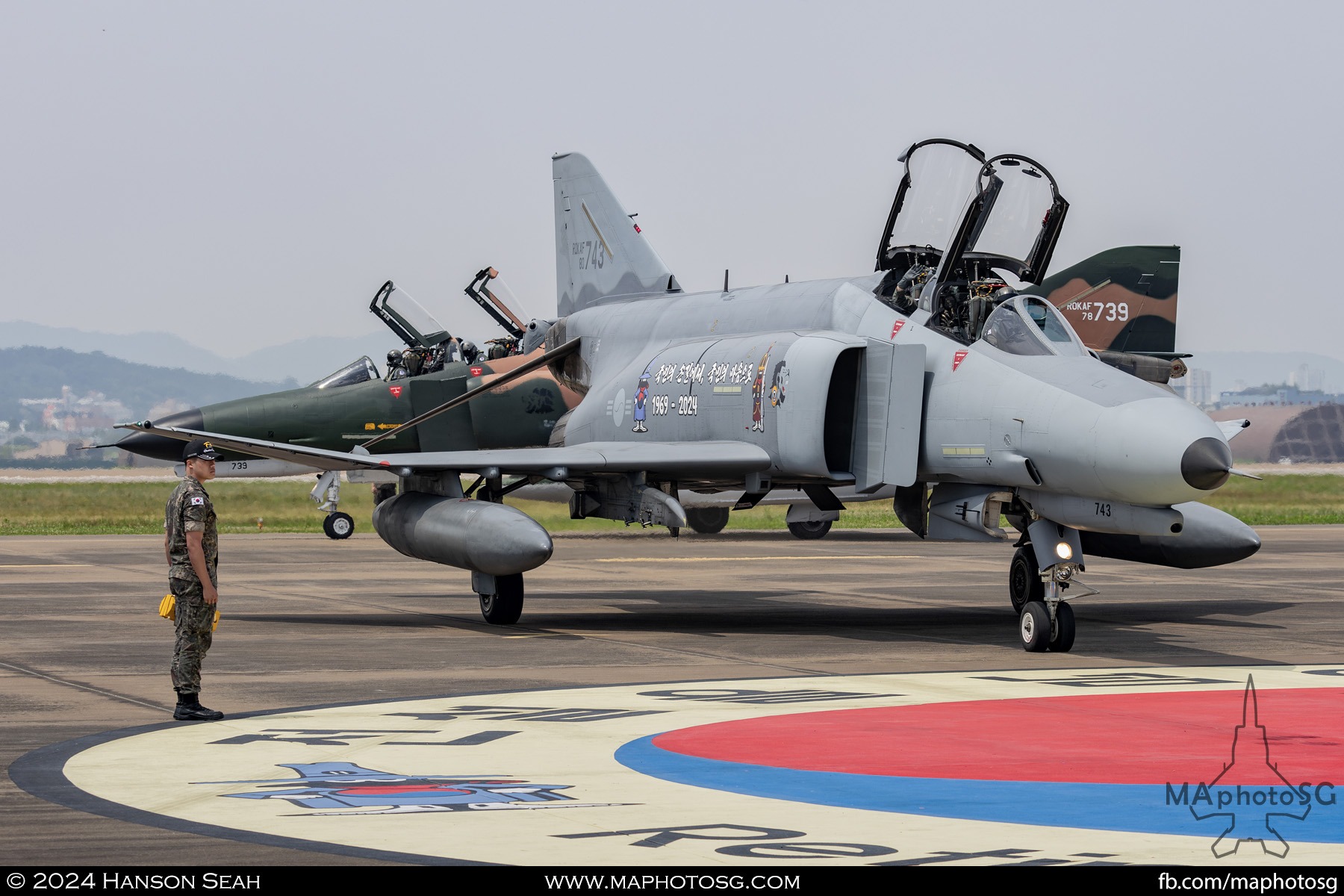
ROKAF Phantom Timeline
| 1958 | Successful first flight of the YF4H-1 (F-4 Prototype) * July 1961: First F-4B for the U.S. Navy * June 1962: First F-4B for the U.S. Marine Corps * May 1963: First F-4C for the U.S. Air Force |
| 1966 | “Air Force Five Year Plan”, proposal to then-President Park Chung-hee to acquire the F-4D |
| Mar 1967 | Then-Prime Minister Chung Il-kwon made informal visit to U.S., discussed the “modernisation of Korean military equipment” |
| Jun 1967 | Then-Air Force Chief of Staff Jang Ji-ryang visited an operational U.S. Air Force base and took a F-4D test flight |
| 12 Feb 1967 | U.S special envoy (led by Cyrus R. Vance) visited South Korea and discussed South Korea’s acquisition of F-4s |
| 28 May 1968 | South Korea-U.S. Defence Ministers meeting, confirmed South Korea’s acquisition of F-4s |
| 3 Sept 1968 | Selection of initial batch of aircrew and maintainers for the F-4 |
| 12 Oct 1968 ~ Aug 1969 | Training of F-4 aircrew and maintainers in U.S. * Total of 112 personnel (including 16 aircrew) * F-4 conversion and instructor pilot course conducted in Davis-Monthan Air Force Base (U.S., Arizona) |
| 10 Jul 1969 | 151st Fighter Squadron established * Under 11th Fighter Wing, Daegu AB * 23 Sept 1969: Inauguration ceremony attended by then-President Park Chung-hee * Temporarily disbanded 16 June 2010 (F-4 operations) |
| 29 Aug 1969 | Arrival of first F-4Ds, with Handover Ceremony in Daegu AB attended by then-Minister of National Defence Im Chung-sik * 6 units delivered initially |
| 1 Jun 1971 | Sinking of North Korean spy ship by the F-4D in a counter-espionage operation off the waters of Gageodo Island |
| 12 Dec 1975 | Handover ceremony for “National Defense Fund” aircraft * Attended by then-Prime Minister Kim Jong-pil * Purchase of 5 F-4Ds using 7 billion won from the National Defense Fund * Inaugurated as ‘Pilseung Squadron (Victory Squadron)’ by then-President Park Chung-hee * F-4D under the ‘Pilseung Squadron’ conducts pilgrimage flight over 12 cities, including Seoul and Daegu |
| 15 Feb 1975 | Took part in counter-espionage operation along coast of Geojin |
| 26 Feb 1975 | Took part in counter-espionage operation near Baengnyeongdo |
| 20 Sept 1977 | Arrival of first F-4Es, Daegu AB * 2 units delivered initially |
| 20 Sept 1977 | 152nd Fighter Squadron established * Initially under 11th Fighter Wing, Daegu AB * Under 17th Fighter Wing, Cheongju AB, from 6 Nov 1979 * Temporarily disbanded 25 Aug 2017 (F-4 operations) |
| 2 Mar 1979 | 153rd Fighter Squadron established * Initially under 11th Fighter Wing, Daegu AB * Under 17th Fighter Wing, Cheongju AB, from 3 Apr 1980 * Under 10th Fighter Wing, Suwon AB, from 25 Sept 2017 * Last ROKAF squadron to operate the Phantom |
| 20 Sept 1977 | 155th Fighter Squadron established * Initially under 17th Fighter Wing, Cheongju AB * Under 19th Fighter Wing, Jungwon AB, from 17 Sept 1991 * Disbanded 5 Aug 1993 (F-4 operations) |
| 1977 | Introduction of AIM-7E air-to-air missile |
| 2 Mar 1979 | First-time participant in Exercise Red Flag * 3 F-4Ds (2 Mar to 25 Apr) |
| 1 Jun 1983 | Opening of F-4 simulator in Daegu AB |
| 25 Feb 1983 | North Korean Captain Lee Woong-pyung defected in a MiG-19, F-4E assisted in guiding the aircraft safely to Suwon Airbase |
| 7 Aug 1983 | Provided air defence and guidance during defection of Chinese MiG-21 |
| 23 Oct 1983 | Participated in Exercise Red Flag * 3 F-4Ds (23 Oct to 3 Dec) |
| 5 Nov 1983 | Interception of Soviet Tu-16 reconnaissance aircraft over East Sea |
| 17 Feb 1984 | Interception of Soviet Tu-95 bomber aircraft over East Sea |
| 22 Mar 1984 | Identification and monitoring of Soviet nuclear submarines over East Sea |
| 21 Feb 1986 | Provided air defence and guidance during defection of Chinese MiG-19 |
| 18 Dec 1987 | F-4D MIMEX (Military Material Excessive) entered service *24 F-4Ds MIMEX introduced (until Apr 1988) |
| 1 Nov 1988 | 156th Fighter Squadron established * Initially under 17th Fighter Wing, Cheongju AB * Under 10th Fighter Wing, Suwon AB, from 5 Sept 1991 * Disbanded 7 Dec 2012 |
| 1 Nov 1988 | 159th Fighter Squadron established * Initially under 11th Fighter Wing, Daegu AB * Under 19th Fighter Wing, Jungwon AB, from 2 Oct 1997, conversion to KF-16 |
| 1 Nov 1989 | 39th Tactical Reconnaissance Group established, Suwon AB * 131st Tactical Reconnaissance Squadron also established * Commenced RF-4C operations from 18 Dec 1989 |
| 16 Dec 1989 | Response to hijacking of CAAC Flight 981 |
| 18 Dec 1989 | RF-4C entered service * 18 RF-4Cs introduced (until Sept 1990) |
| 19 Dec 1989 | F-4E MIMEX (2nd batch) entered service * 30 F-4Es MIMEX introduced (until 1991) |
| 2 July 1990 | Transfer of RF-4C to South Korea (Daegu AB) * From U.S. 7th Air Force, 460th Tactical Reconnaissance Group to ROKAF 39th Tactical Reconnaissance Squadron |
| 22 Aug 1990 | Participated in Exercise Red Flag * 4 F-4Es (22 Aug to 2 Oct) |
| 1 Dec 1990 | 157th Fighter Squadron established * Initially under 17th Fighter Wing, Cheongju AB * Under 20th Fighter Wing, Seosan AB, from 1 Feb 1999, conversion to KF-16 |
| 21 Oct 1996 | Participated in first Seoul Airshow (21 Oct to 27 Oct) * Flypast, static display, flight demonstration |
| 17 Feb 1998 | Interception of Russian Il-20 reconnaissance aircraft over East Sea |
| 2002 | Introduction of AGM-142 ‘Popeye’ air-to-ground missile |
| 8 May 2007 | 110th Fighter Squadron achieves 50,000 accident-free hour record with the F-4D |
| 20 Aug 2007 | 151st Fighter Squadron achieves 80,000 accident-free hour record with the F-4D |
| 16 Jun 2010 | F-4D retirement ceremony, Daegu AB * Attended by then-Air Force Chief of Staff Lee Gye-hoon |
| 28 Feb 2014 | RF-4C retirement ceremony, Suwon AB |
| 31 Aug 2017 | Completion of final F-4E periodic inspection, Cheongju AB * Total of 3,810 F-4E inspections from Nov 1979 to Aug 2017 |
| 8 Mar 2024 | Farewell elephant walk conducted |
| 18 Apr 2024 | Last AGM-142 live-firing training * Last MK-82 live-drop training on 5 Apr 2024 |
| 9 May 2024 | F-4E ‘Pilseung Squadron’ farewell pilgrimage flight * Over major landmarks such as Suwon, Cheongju, Daegu, Busan, Sacheo and Gageodo Island |
| 7 Jun 2024 | F-4E retirement ceremony, Suwon AB * Attended by Minister of National Defence Shin Won-sik |













